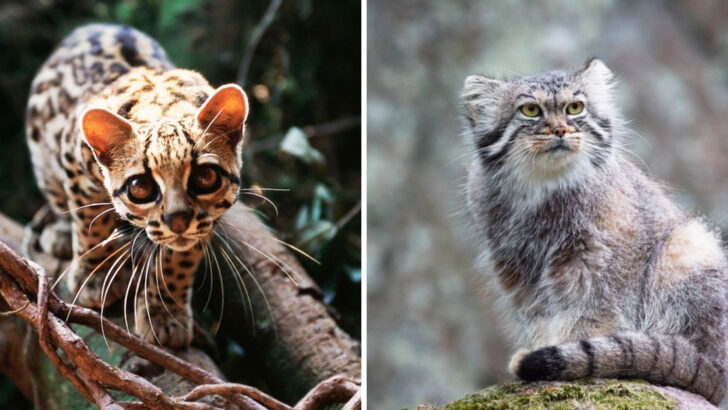Not all wild cats are roaring, jungle-stalking beasts. Some are small enough to perch on your windowsill—if they weren’t, you know, wild.
From the elusive sand cat, which looks like it just stepped out of a cozy living room, to the margay, a feline acrobat that could out-climb your house cat any day, these wild cousins could easily be mistaken for pets. But don’t be fooled—behind their adorable faces lie sharp instincts, incredible hunting skills, and a completely untamed nature.
While lions and tigers steal the spotlight, these lesser-known felines roam forests, mountains, and deserts, often unseen and unrecognized. Some are barely bigger than a loaf of bread, others are sleek and spotted like miniature leopards.
Think you know your wild cats? Get ready to meet 23 feline wonders that might just make you do a double take!
Rusty-Spotted Cat
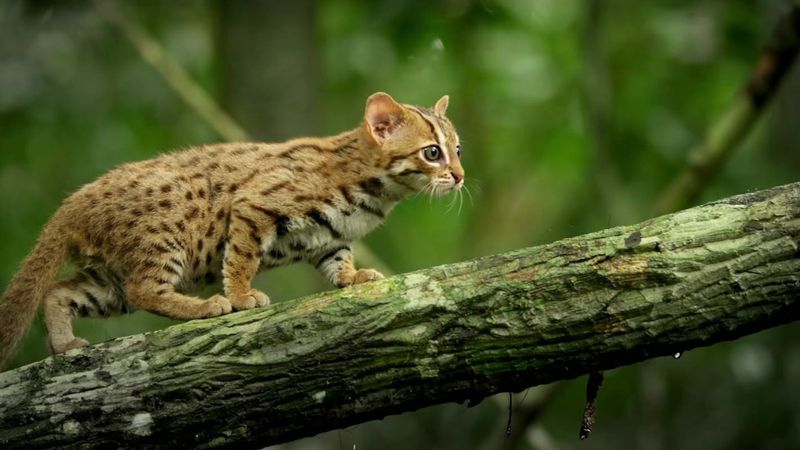
The rusty-spotted cat is one of the smallest wild cats in the world, native to the forests of India and Sri Lanka. Its coat, marked with rusty spots, provides excellent camouflage among the forest foliage. Often dubbed the ‘hummingbird of the cat family’ due to its petite size and energetic behavior, it resembles a domestic kitten even in adulthood.
These cats are primarily nocturnal, using their acute senses to hunt small prey at night. Despite their size, rusty-spotted cats are formidable hunters, and their agility allows them to navigate the dense forest with ease.
Sand Cat
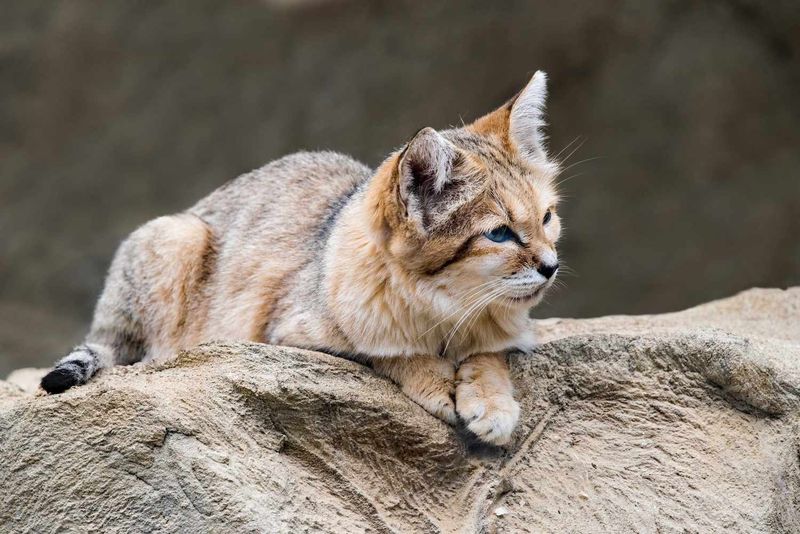
The sand cat, perfectly adapted to desert life, is found in the arid regions of North Africa and Southwest Asia. Its sandy-colored fur helps it blend into the shifting desert sands, while the fur on its paws protects it from hot surfaces.
Known for its large ears, the sand cat can detect prey underground, making it an exceptional hunter of desert rodents. It is a solitary creature, surviving in one of the harshest environments on earth, and is rarely seen by humans due to its elusive nature and excellent natural camouflage.
Black-Footed Cat
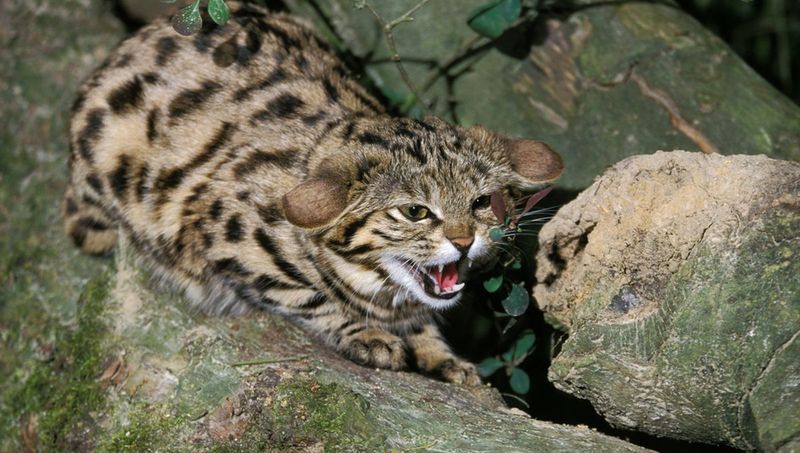
The black-footed cat, native to the grasslands of Southern Africa, is one of the smallest wild cats globally, but don’t let its size fool you. Its fur is a blend of spots and stripes, providing excellent camouflage in its natural habitat.
This nocturnal hunter is known for its ferocity and success rate in catching prey, often outshining larger cats in its efficiency. Black-footed cats are solitary and secretive, making them a rare sight even for seasoned wildlife enthusiasts. Their ability to survive in arid environments adds to their mystique and allure.
Margay
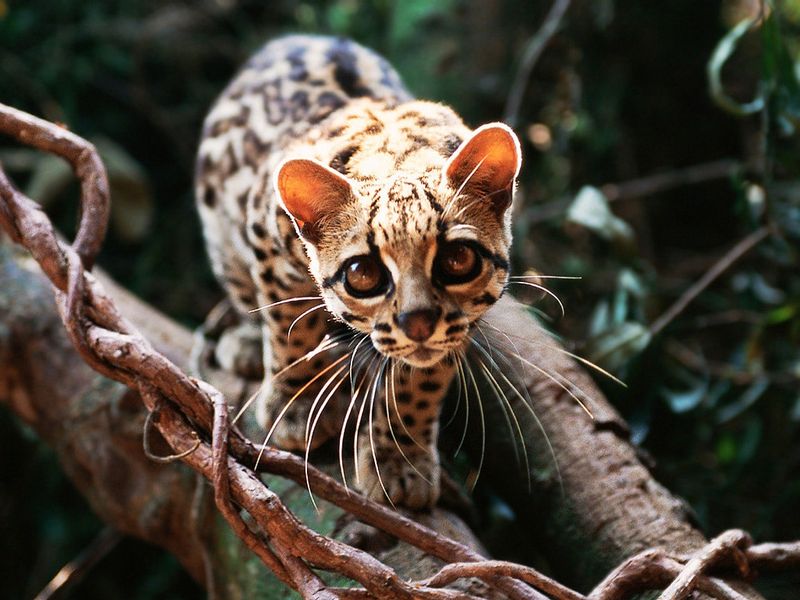
The margay is a small, spotted wild cat native to the dense rainforests of Central and South America. Known for its remarkable agility, it spends most of its life in trees, jumping from branch to branch with ease.
Its large eyes and beautiful spotted coat make it resemble a domestic cat, but its climbing prowess sets it apart. Margays are primarily nocturnal, hunting birds and small mammals in the lush canopy. Their ability to rotate their ankles allows them to navigate headfirst down trees, a unique adaptation among cats.
Flat-Headed Cat
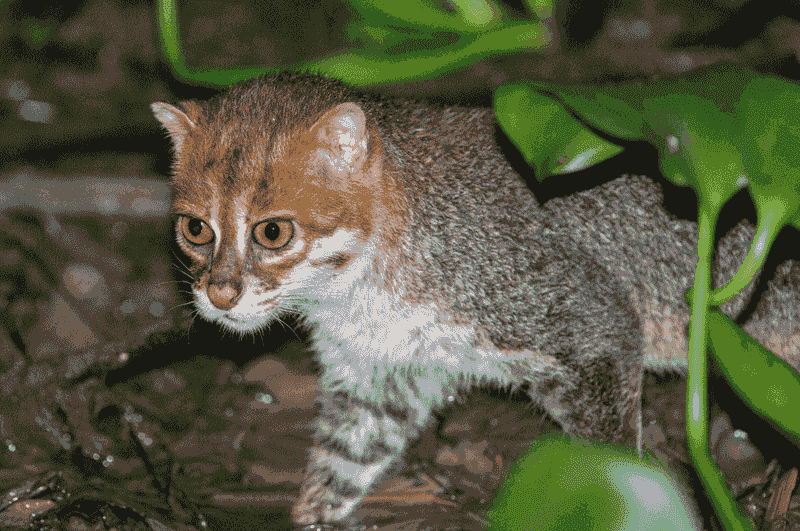
The flat-headed cat, native to the wetlands of Southeast Asia, is a unique semi-aquatic feline. Its flat, elongated head and short legs give it an unusual appearance, quite distinct from most cats.
These cats have adapted to a life of fishing, with webbed feet and a love for water. Their diet consists mainly of fish and small aquatic creatures. Unfortunately, due to habitat loss and water pollution, the flat-headed cat is considered endangered. Its elusive nature and specialized hunting skills make it a fascinating, yet seldom-seen, member of the wild cat family.
Iriomote Cat
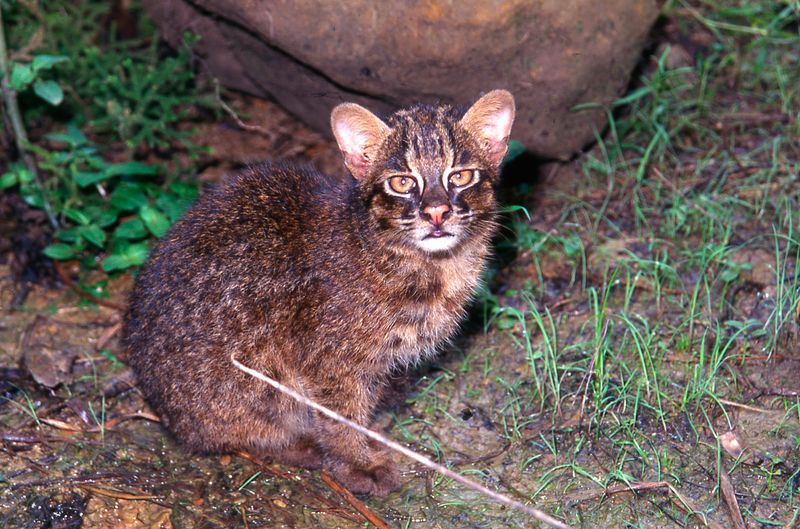
The Iriomote cat is a critically endangered wild cat found only on Iriomote Island in Japan. With dark spotted fur and a slender body, it is often mistaken for a domestic cat.
These cats are solitary and inhabit the island’s subtropical forests, thriving in its diverse ecosystems. Their diet includes small mammals, birds, and insects, and they are known for their stealthy hunting techniques. Conservation efforts are crucial for this rare species, whose population is dwindling due to habitat destruction and human encroachment on their isolated island home.
Andean Mountain Cat
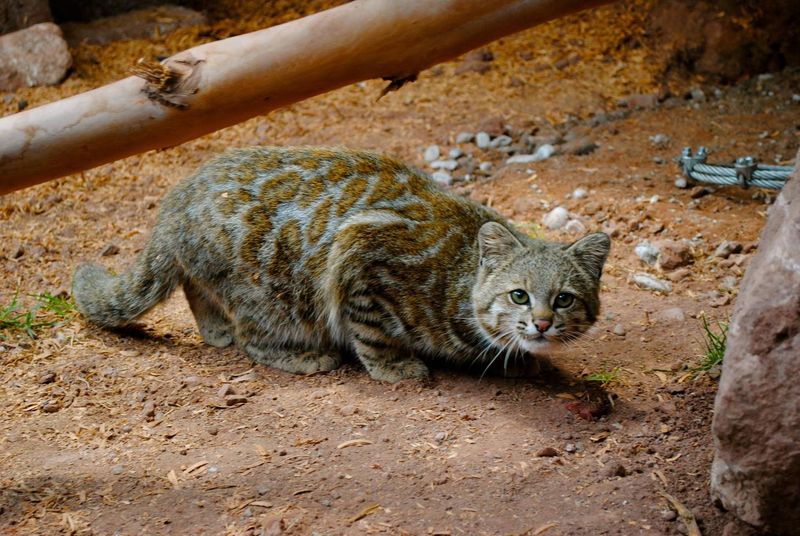
The Andean mountain cat is a rare and elusive feline native to the rocky terrains of the Andes Mountains. Its thick, greyish fur and bushy tail keep it warm in the cold, high-altitude environment.
These cats are rarely seen, living in remote areas and hunting small mammals like chinchillas. Despite their striking resemblance to domestic cats, they are adapted to survive in harsh, mountainous conditions. Conservationists are concerned about their declining numbers due to habitat loss and hunting, making them one of the most endangered wild cats in the world.
Pampas Cat
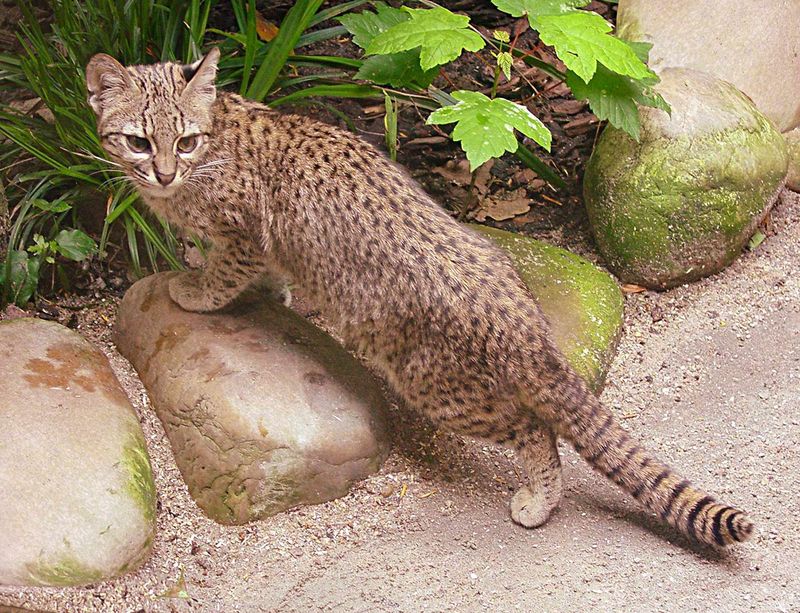
The pampas cat, found in the grasslands of South America, is a small wild cat with a tawny coat and distinct stripes on its legs and tail. It thrives in a variety of habitats, from grasslands to forests.
These cats have a solitary nature, often seen wandering alone in search of birds and small mammals. Despite their resemblance to some domestic cat breeds, pampas cats are uniquely adapted to their environment. Their adaptability is key to their survival, but habitat destruction poses a significant threat to their population in the wild.
Kodkod
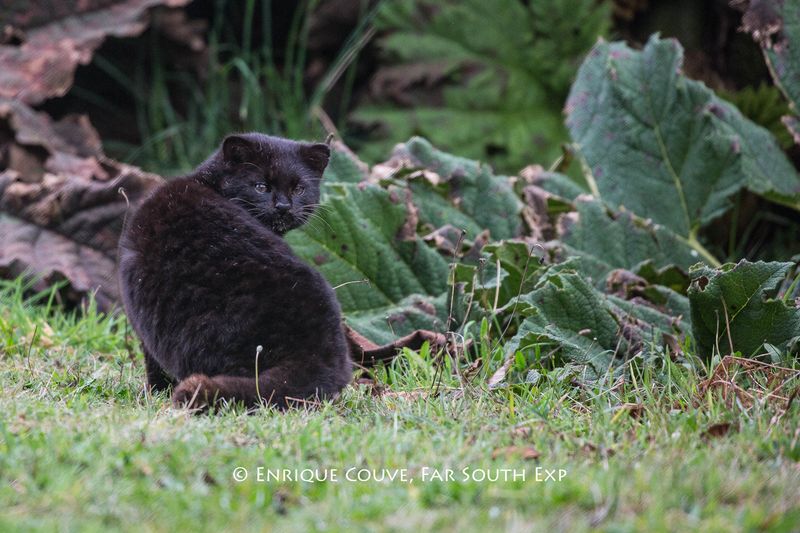
The kodkod is the smallest wild cat in the Americas, found in the dense forests of Chile and Argentina. Its spotted fur and large eyes give it a kitten-like appearance, but it is a skilled hunter.
Kodkods are primarily nocturnal, preying on birds and small mammals. They are adept climbers, often seen in trees, which they use as vantage points for hunting. Despite their small size, kodkods are territorial and fiercely protective of their habitat. Conservation efforts are ongoing to protect these beautiful cats from habitat loss and fragmentation.
Oncilla
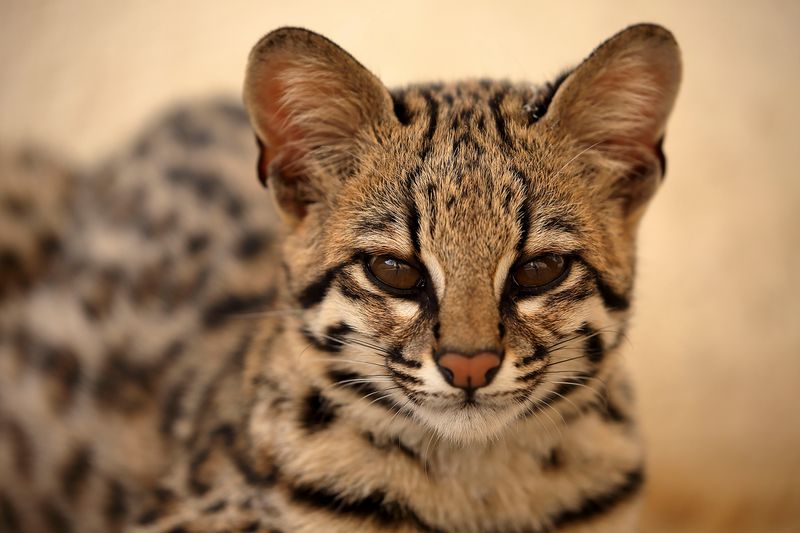
The oncilla, also known as the little spotted cat, is a small wild cat native to the tropical forests of South America. Its spotted coat offers perfect camouflage among the dense vegetation.
These agile cats are primarily nocturnal, hunting birds, rodents, and reptiles. Despite their size and appearance, oncillas are fierce hunters, known for their stealth and agility. They are solitary animals, rarely seen in the wild due to their secretive nature. Deforestation and habitat fragmentation are significant threats to their survival, emphasizing the need for conservation efforts.
Fishing Cat
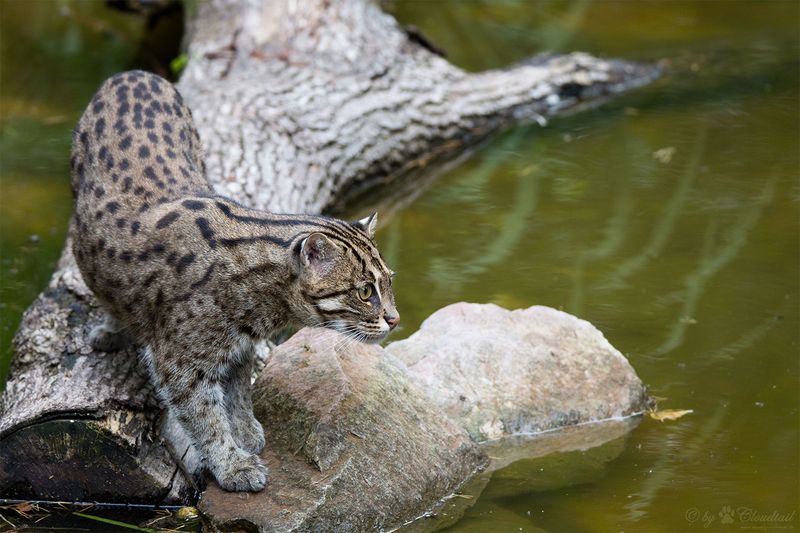
The fishing cat, found in the wetlands of Southeast Asia, is a skilled aquatic hunter with a unique affinity for water. Its stocky build and spotted fur distinguish it from other wild cats.
These cats have partially webbed feet, aiding in swimming and hunting fish, which form a significant part of their diet. Their exceptional fishing skills make them standout hunters in their watery habitats. Fishing cats are endangered, facing threats from habitat destruction and pollution. Their reliance on healthy aquatic ecosystems highlights the importance of preserving these environments for their survival.
Chinese Mountain Cat
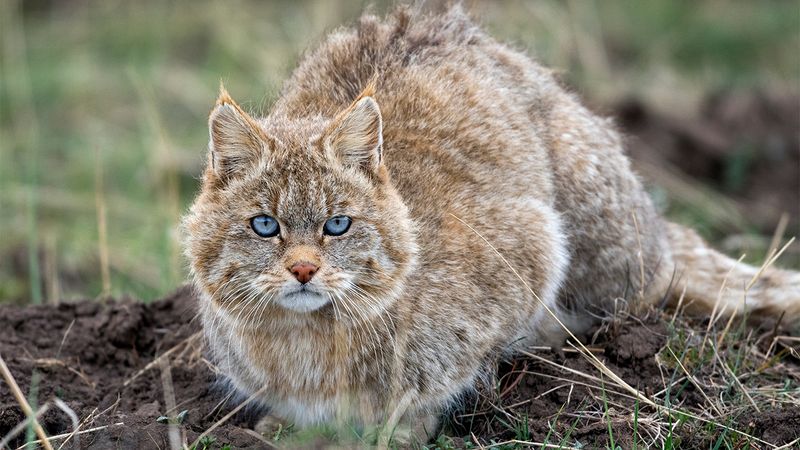
The Chinese mountain cat, native to the highlands of Tibet and Qinghai in China, is adapted to cold, mountainous environments. Its sandy-brown fur and distinct ear tufts make it stand out in the harsh landscape.
These cats are elusive, rarely seen by humans, and primarily nocturnal. They prey on small mammals and birds, using their keen senses and stealth to hunt in the challenging terrain. Conservationists are concerned about their declining population due to habitat loss and human activities, making protective measures essential for their survival.
Borneo Bay Cat
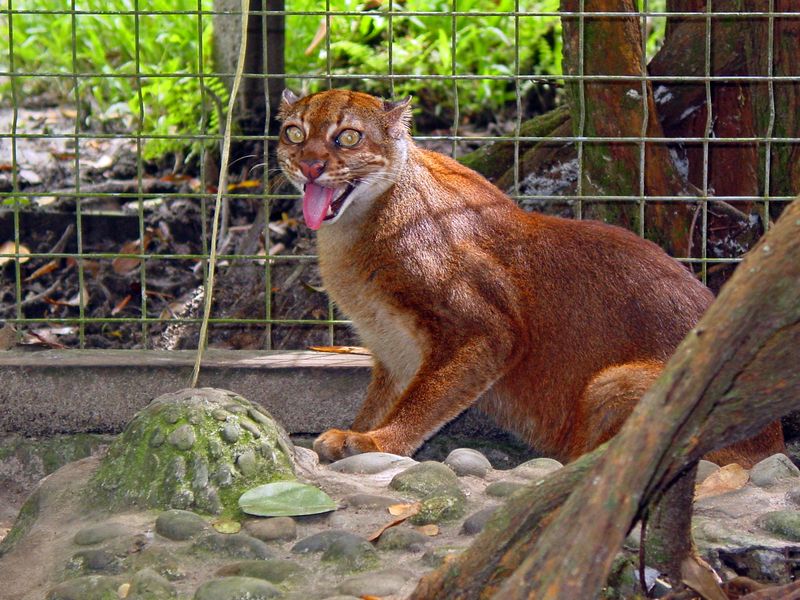
The Borneo bay cat, native to the rainforests of Borneo, is one of the least known wild cat species. Its reddish-brown fur and slender body allow it to blend seamlessly into the dense jungle.
These cats are highly elusive, with little known about their behavior in the wild. They are believed to be solitary hunters, preying on small mammals and birds. The Borneo bay cat is endangered, with its habitat increasingly threatened by deforestation and human encroachment. Efforts to study and conserve this mysterious feline are crucial to prevent its extinction.
Pallas’s Cat
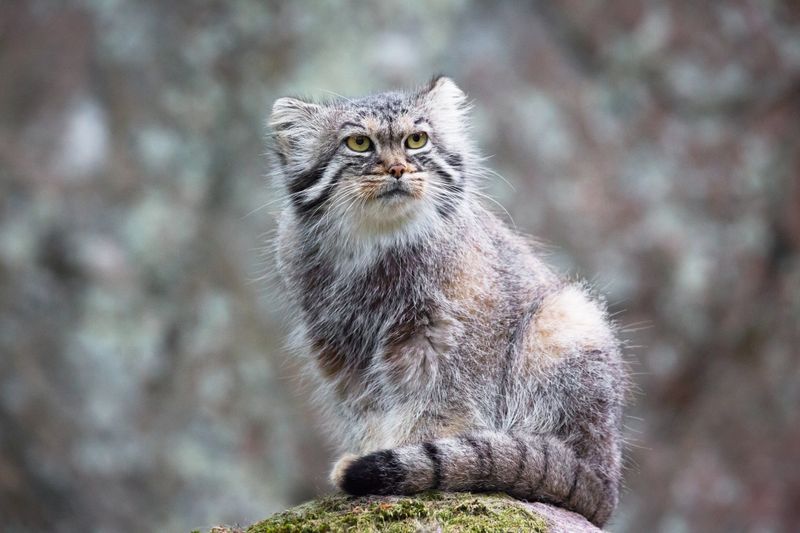
Pallas’s cat, also known as the manul, is native to the cold, arid regions of Central Asia. Its dense, fluffy fur and flat face give it a distinctive appearance, unlike any other wild cat.
These cats are solitary and elusive, spending their days hiding among rocky outcrops. Pallas’s cats are primarily crepuscular, hunting small mammals and birds during dawn and dusk. Their unique adaptations make them well-suited for harsh environments, but habitat degradation and hunting pose significant threats to their survival. Conservation efforts focus on preserving their natural habitats.
Marbled Cat
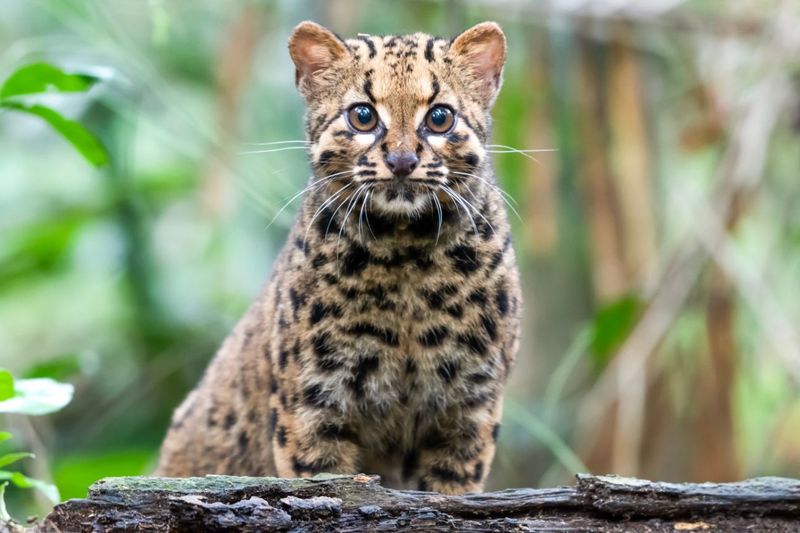
The marbled cat, found in the rainforests of Southeast Asia, possesses a strikingly patterned coat that resembles the marbling of polished stone. Its long tail and agile body make it a skilled climber.
These cats are primarily arboreal, spending most of their time in trees where they hunt birds and small mammals. Their playful nature and elusive behavior make sightings rare. Despite their adaptability, marbled cats face threats from habitat destruction and hunting. Conservation efforts are essential to protect these beautiful creatures and their forested homes.
Jungle Cat

The jungle cat, native to South Asia’s swampy grasslands and forests, is a medium-sized wild cat that resembles a domestic cat with its tawny fur and black-tufted ears.
These cats are versatile hunters, preying on birds, rodents, and reptiles. They are often found near water bodies, using their keen senses to detect prey. Jungle cats are solitary and primarily active during the day, making them more visible than many other wild cats. Despite their adaptability, habitat destruction and human conflict pose significant threats to their populations.
Caracal
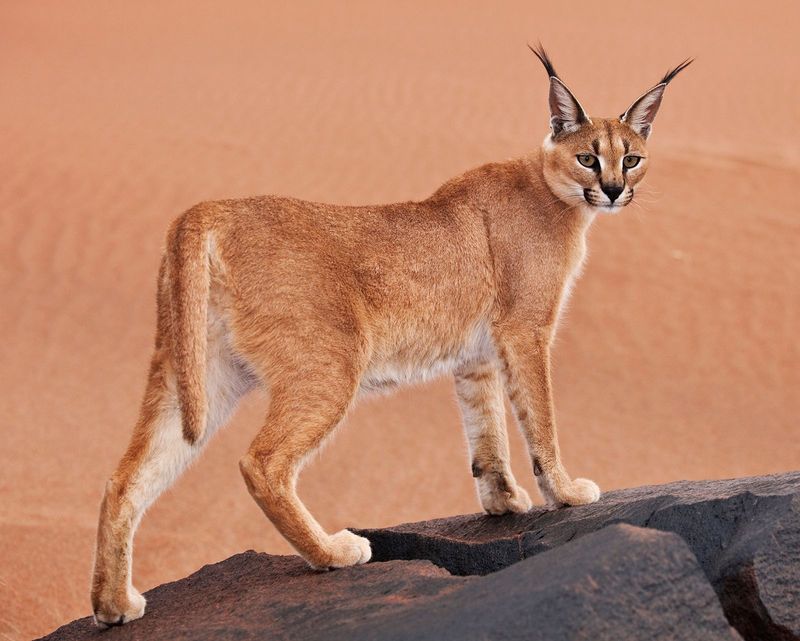
The caracal, native to Africa’s savannas, is known for its striking appearance, with long tufted ears and a powerful build. Its sandy-colored fur provides excellent camouflage in its open habitat.
These cats are skilled hunters, capable of leaping high to catch birds mid-flight. Caracals are solitary and territorial, often defending their range fiercely. Despite their fearsome hunting ability, they are threatened by habitat loss and conflict with humans. Conservation efforts focus on reducing these threats and ensuring the caracals’ survival in the wild.
Serval
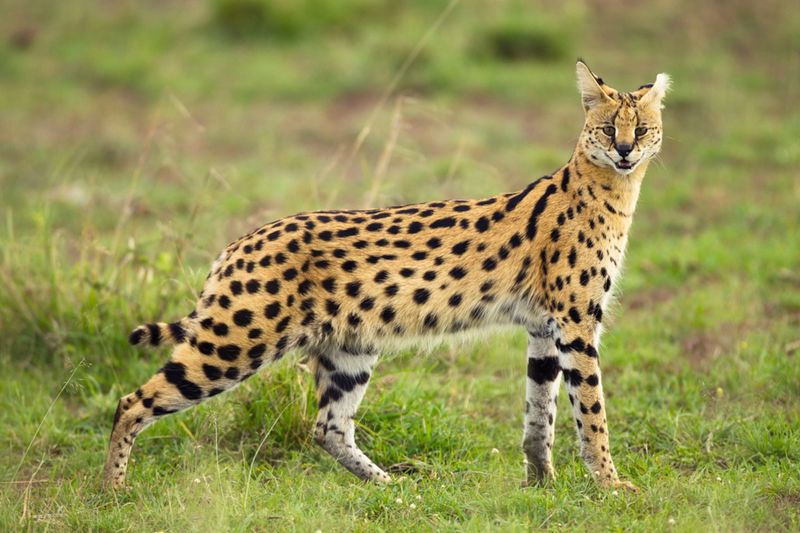
The serval, an elegant wild cat native to Africa’s grasslands, is known for its long legs and large ears, which aid in detecting prey over long distances. Its spotted coat provides excellent camouflage.
Servals are remarkable hunters, using their agility and speed to catch birds and small mammals. They are primarily solitary, with a keen sense of hearing that guides them in the hunt. These cats are adaptable to various environments, but habitat destruction and illegal hunting threaten their populations. Conservation efforts aim to protect their natural habitats and ensure their future.
Geoffroy’s Cat
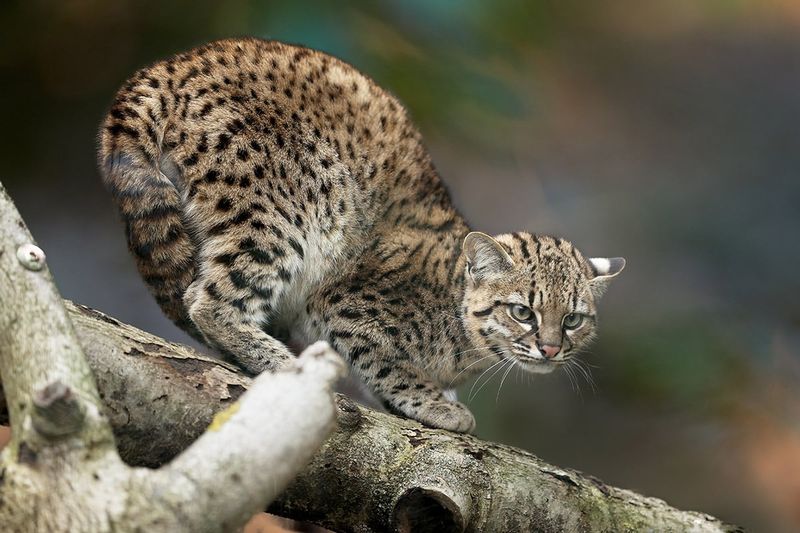
Geoffroy’s cat, a small wild cat native to South America, is known for its spotted fur and small stature. Found in various habitats from forests to grasslands, it is a versatile and adaptable hunter.
These cats are solitary and primarily nocturnal, preying on small mammals and birds. Their ability to adapt to different environments is key to their survival. Despite their adaptability, habitat loss and hunting pose challenges to their populations. Conservation efforts aim to protect these resilient cats and their diverse habitats across South America.
Bay Cat
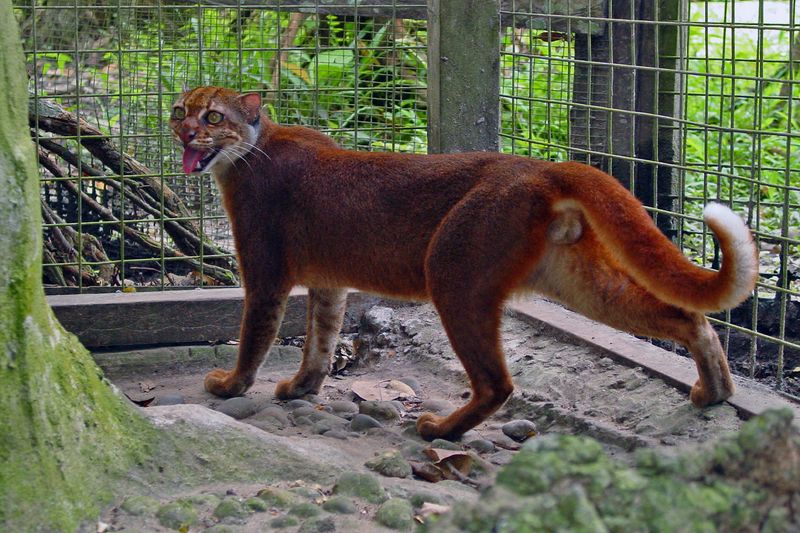
The bay cat, also known as the Bornean bay cat, is a rare feline found only on the island of Borneo. Its deep chestnut fur and long tail give it a regal appearance, often hidden among the dense jungle foliage.
These elusive cats are poorly understood, with limited sightings and studies. They are believed to be solitary hunters, preying on small mammals and birds. Habitat destruction and human encroachment threaten their survival, making conservation efforts critical. Protecting the Borneo rainforests is essential to preserve the bay cat and its mysterious existence.
Tigrina
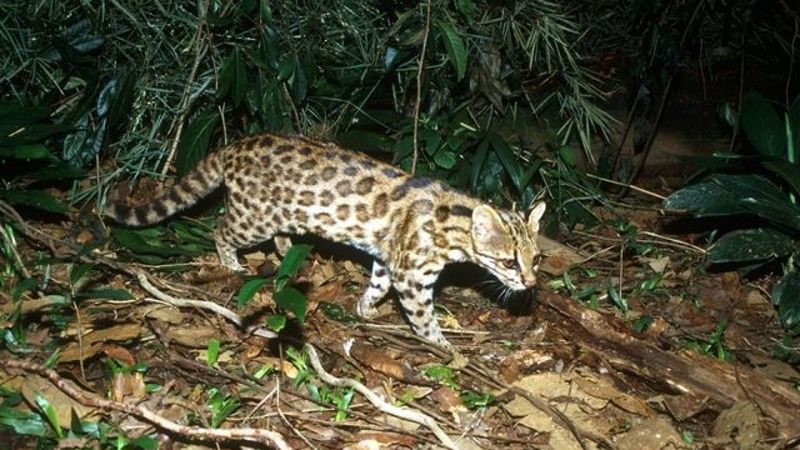
The Tigrina, also known as the oncilla, is a small, spotted wild cat native to South America’s dense forests. Its striking spotted coat allows it to blend seamlessly into the leafy underbrush.
Resembling a domestic tabby in size, the Tigrina possesses large, expressive eyes and distinctive ear tufts. These features give it an almost mystical appearance, captivating those lucky enough to spot it.
Despite its domestic look, the Tigrina is a skilled nocturnal hunter, preying on small mammals and birds. Conservation efforts are crucial as habitat loss threatens its survival.
Tsushima Leopard Cat
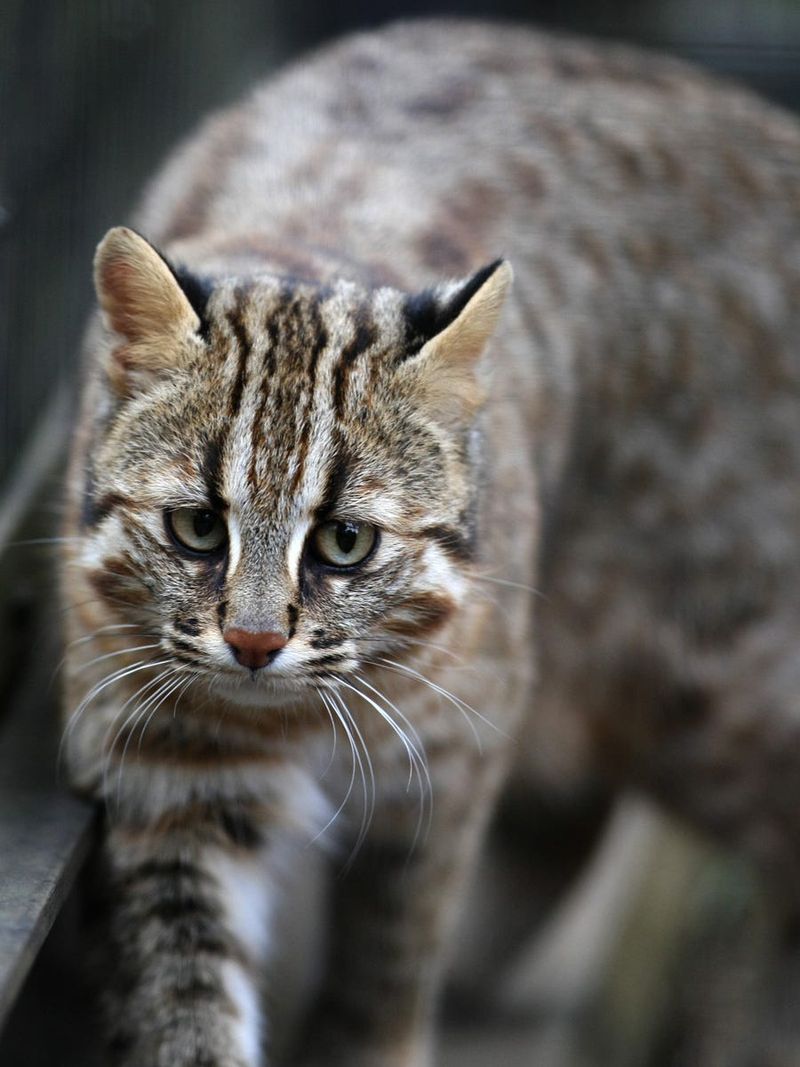
The Tsushima Leopard Cat is a small wild feline found exclusively on Japan’s Tsushima Island. Sporting a distinctive fur pattern, it bears an uncanny resemblance to a domestic cat, yet with a wild twist.
Smaller than other leopard cats, it has a unique charm that captivates wildlife enthusiasts. Its keen senses make it an adept hunter, thriving in the island’s thick forests.
As an endangered species, the Tsushima Leopard Cat faces numerous threats, including habitat destruction and competition with domestic cats. Conservation efforts are vital to ensure its continued existence.
Savannah Whisperer Feline
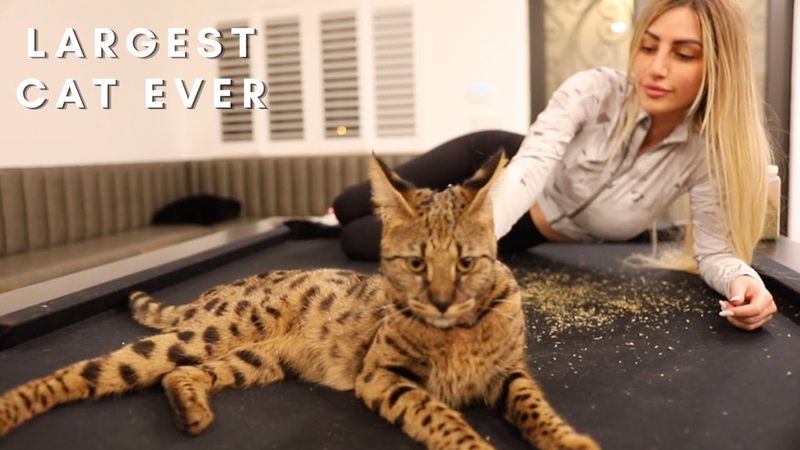
The Savannah Whisperer Feline calls the expansive African savannah its home. With sandy fur and tufted ears, it perfectly blends with the golden grasses, making it a master of stealth. Its amber eyes seem to hold the warmth of the sun itself.
A solitary creature, it is often seen at dawn or dusk, when the light softens and shadows lengthen. Despite its wild nature, its affectionate purring can be misleading, reminiscent of a domestic cat’s gentle demeanor.
This feline’s unique traits and adaptability to its environment make it a fascinating yet lesser-known wild cat.

